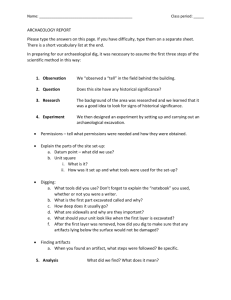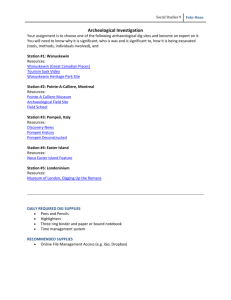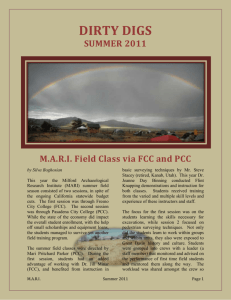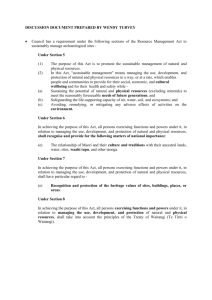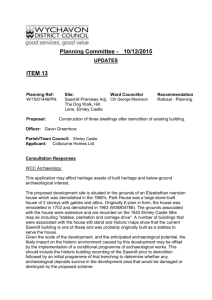The Cultural Resource Division of the Louis Berger Group, Inc
advertisement
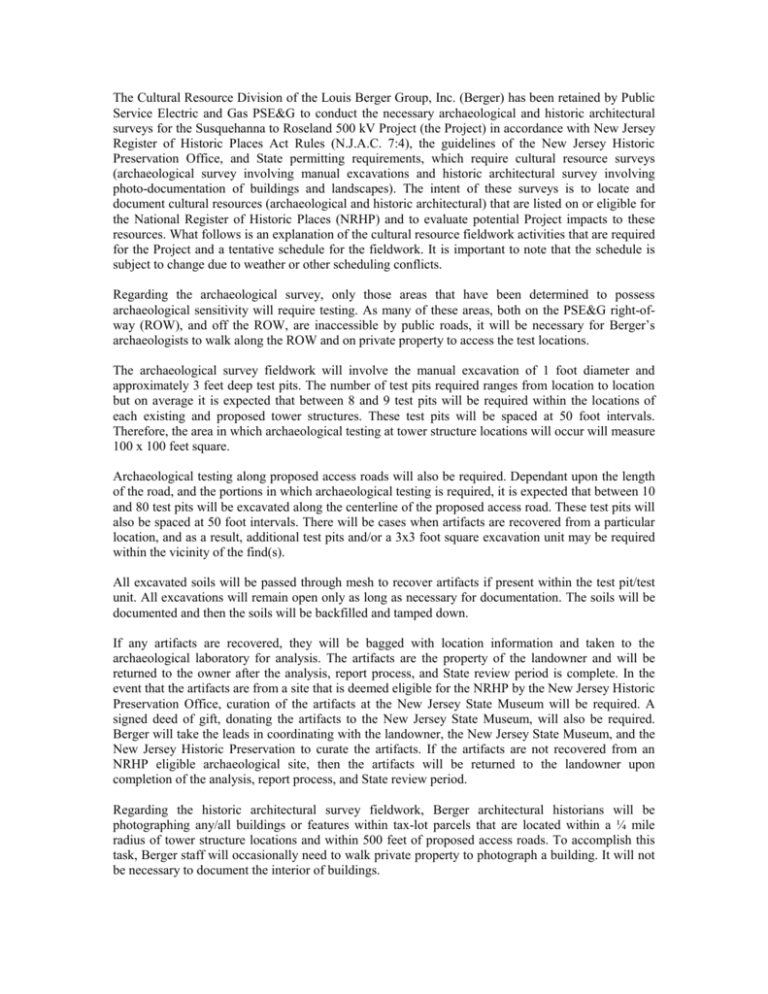
The Cultural Resource Division of the Louis Berger Group, Inc. (Berger) has been retained by Public Service Electric and Gas PSE&G to conduct the necessary archaeological and historic architectural surveys for the Susquehanna to Roseland 500 kV Project (the Project) in accordance with New Jersey Register of Historic Places Act Rules (N.J.A.C. 7:4), the guidelines of the New Jersey Historic Preservation Office, and State permitting requirements, which require cultural resource surveys (archaeological survey involving manual excavations and historic architectural survey involving photo-documentation of buildings and landscapes). The intent of these surveys is to locate and document cultural resources (archaeological and historic architectural) that are listed on or eligible for the National Register of Historic Places (NRHP) and to evaluate potential Project impacts to these resources. What follows is an explanation of the cultural resource fieldwork activities that are required for the Project and a tentative schedule for the fieldwork. It is important to note that the schedule is subject to change due to weather or other scheduling conflicts. Regarding the archaeological survey, only those areas that have been determined to possess archaeological sensitivity will require testing. As many of these areas, both on the PSE&G right-ofway (ROW), and off the ROW, are inaccessible by public roads, it will be necessary for Berger’s archaeologists to walk along the ROW and on private property to access the test locations. The archaeological survey fieldwork will involve the manual excavation of 1 foot diameter and approximately 3 feet deep test pits. The number of test pits required ranges from location to location but on average it is expected that between 8 and 9 test pits will be required within the locations of each existing and proposed tower structures. These test pits will be spaced at 50 foot intervals. Therefore, the area in which archaeological testing at tower structure locations will occur will measure 100 x 100 feet square. Archaeological testing along proposed access roads will also be required. Dependant upon the length of the road, and the portions in which archaeological testing is required, it is expected that between 10 and 80 test pits will be excavated along the centerline of the proposed access road. These test pits will also be spaced at 50 foot intervals. There will be cases when artifacts are recovered from a particular location, and as a result, additional test pits and/or a 3x3 foot square excavation unit may be required within the vicinity of the find(s). All excavated soils will be passed through mesh to recover artifacts if present within the test pit/test unit. All excavations will remain open only as long as necessary for documentation. The soils will be documented and then the soils will be backfilled and tamped down. If any artifacts are recovered, they will be bagged with location information and taken to the archaeological laboratory for analysis. The artifacts are the property of the landowner and will be returned to the owner after the analysis, report process, and State review period is complete. In the event that the artifacts are from a site that is deemed eligible for the NRHP by the New Jersey Historic Preservation Office, curation of the artifacts at the New Jersey State Museum will be required. A signed deed of gift, donating the artifacts to the New Jersey State Museum, will also be required. Berger will take the leads in coordinating with the landowner, the New Jersey State Museum, and the New Jersey Historic Preservation to curate the artifacts. If the artifacts are not recovered from an NRHP eligible archaeological site, then the artifacts will be returned to the landowner upon completion of the analysis, report process, and State review period. Regarding the historic architectural survey fieldwork, Berger architectural historians will be photographing any/all buildings or features within tax-lot parcels that are located within a ¼ mile radius of tower structure locations and within 500 feet of proposed access roads. To accomplish this task, Berger staff will occasionally need to walk private property to photograph a building. It will not be necessary to document the interior of buildings.
